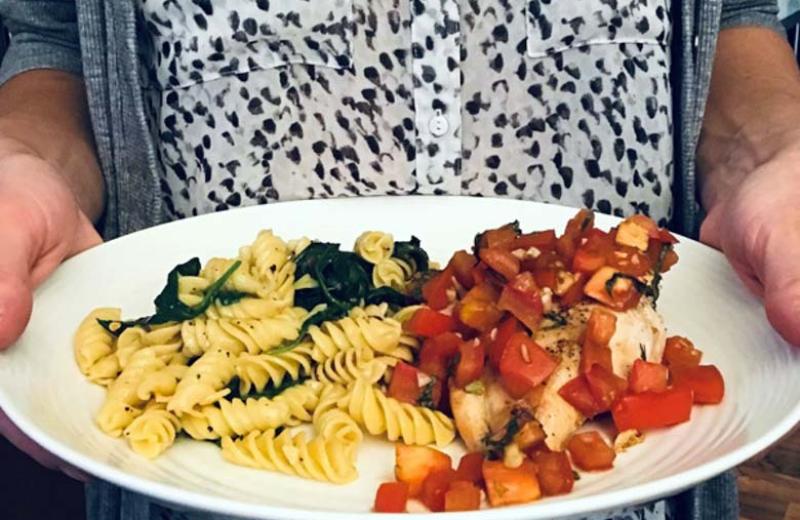Do you eat lunch at your desk? Eat until you are uncomfortably full? Inhale your meals?
If this sounds like you, keep reading — this blog post is all about how to incorporate mindful eating into your work day!
What is mindful eating?
Mindful eating focuses on paying attention to the eating experience. The focus is more on how to eat, and less on what to eat. In practising mindful eating, the goal is to be present, use all of the senses (seeing, tasting, hearing, smelling, and feeling) without judgment, and to notice the emotional and physical responses that take place before, during, and after eating.
Why is mindful eating important?
Becoming more mindful while eating can bring awareness to your own unique habits, thoughts, and feelings around food. I know I fall victim to eating at my desk and working through lunch to try to “catch up” with a never-ending to-do list, or parking myself on the couch to watch Netflix and eat a bowl full of snacks. I know I’m not the only one!
Eating in these moments becomes mindless, not enjoyable, and provides a sense that eating is not important. But, eating is important! Not only does it nourish our bodies with the vital nutrients we need to survive, it provides us with enjoyment and an opportunity to appreciate food and regain food freedom.
Making time to eat helps productivity
Making time to just eat instead of also working during your breaks can help you be more productive at work. Taking a break and focusing on something else while you eat nourishing food can help you recharge your brain, reduce stress, and get you ready for the next item on your daily to-do list.
How to eat mindfully at work
Practising mindful eating at work can be challenging, but the routine of our job provides an opportunity to incorporate mindful eating as part of your own daily routine. Here are four strategies that you can do to practise mindful eating in the workplace:
- Be present – Put your phone down and step away from your computer. Most things can wait 15-30 minutes while you eat your snacks or lunch. Your breaks are built into your day, so use them to recharge! Eat with friends or find a quiet place to enjoy your own company while focusing on your eating.
- Listen to your hunger and fullness cues – Once you get to work, pay attention to when you start to feel hungry. If your breaks are flexible, try eating when you are truly hungry. Then try to eat until you’re satisfied, but not stuffed. Do you have food left over? Are you still hungry and looking for more to eat? Adjust what you bring in your lunch box tomorrow to meet your hunger needs.
- Eat slowly – Give your body time to recognize that you’re feeding it. This can take up to 20 minutes — whoa! Taking your time can help you eat until you’re satisfied, instead of hungry or uncomfortably full. Try eating your lunch slowly by chewing thoroughly and noticing how the food is making you feel.
- Engage your senses – For the first five bites of your meal, notice how the food tastes, feels in your mouth, smells, sounds, and looks. What do you think? Are you enjoying what you’re eating? You may be surprised with your thoughts!
Take action!
Pick one strategy from above that resonates with you. Write it down on a piece of paper, your note app, or set it as a daily reminder on your phone or in your Outlook or Google calendar.
Every day for the next week practice this one strategy. Remember, mindful eating is a practice, and it may be something that is completely different than your norm. Don’t fret! If you lose track, or get distracted, acknowledge it and then try again. It will get easier!
Have you tried these strategies and are looking to build a better relationship with food? Talk to a dietitian who can help you with your individual needs!
- There are dietitians in various communities across Northern Health. A referral may be required. Talk to your health care provider to learn more.
- BC residents can also access Dietitian Services at HealthLink BC, by calling 8-1-1 (or 604-215-8110 in some areas) and asking to speak with a dietitian.














Comments